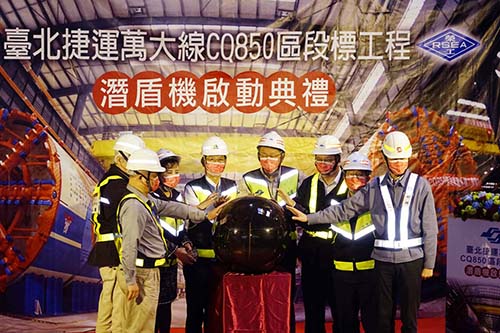Optoelectronics seized the stone tiger habitat again, this time more! Miaoli 7.6 hectares development project, fear of cutting down trees to block stone tiger ecological corridor
19 shared.
Photoelectric development case to seize the stone tiger habitat, this time the area is larger! A few days ago, conservation groups revealed that Miaoli Mountain cutting trees to plant electricity is shocking. Now there is another 7.6 hectares of shallow mountain area in Chusen Village of Tongluo Township, which has been applied for development by photovoltaic industry. Taiwan Stone Tiger Conservation Association is worried that this development project will block the ecological corridor of stone tigers, limit the habitat of stone tigers, and cause more road kill. The association launched a joint signing activity from now on and asked the county government to hire ecological experts to strictly review it.
In response to this case, the Miaoli County government admitted that it had only conducted a survey once so far, and would incorporate the opinions of the Forestry Bureau and the Agriculture Department into the development plan, and then review it strictly.
.jpg)
.jpg)
The upper right area of the photo is the predetermined site of the photoelectric case field. Once developed, the shallow mountain forest will disappear and the stone tiger ecological corridor will also be blocked. (Provided by Li Jinghong) Photovoltaic development of less than 2 hectares requires ecological review, but 7.6 hectares are not used?
Although the Committee of Agriculture stipulates that any photovoltaic development case applied for after August 1 last year, any change in agricultural land area exceeding 2 hectares shall be subject to approval and change permission from the central government, but this photovoltaic development case in Zhusen Village, Tongluo Township, Miaoli County was submitted on May 26 last year, so even if the area is as high as 7. 6 hectares, which can still be considered directly by local governments themselves.
Miaoli pioneered the nation's only "three-stage review system", introducing the assistance of ecological experts to assess the impact of photovoltaic site development on the ecological environment. However, the larger Tongluo Photovoltaic Project did not have to undergo the three-stage review mentioned above, but instead adopted a non-urban land development review system. However, this system did not have a mechanism to deal with ecological environmental issues, nor did it have an ecological committee. Once approved, it would have a great impact on Shihu, which caused people to worry.
Photoelectric case field will block Shihu ecological corridor, fear to cause more road kill
Taiwan's Stone Tiger Conservation Association points out that the Chusen village case site is located in an important ecological corridor for the stone tiger population. There is a natural stream in the case site, which is an important passage for stone tigers to cross the east and west habitat. Once the photovoltaic panels are installed, in addition to limiting the area of activity of the stone tiger and making the habitat more fragmented, they will also force the stone tiger to cross the 13 th line directly, causing more road kill situations.
chen mei ting, chairman of the stone tiger association and known as "mother of the stone tiger," points out that this natural stream lies between miaoli city and tongluo rural township, and is originally a forest area with relatively scattered residents and a large number of stone tigers. in addition, there are already many roads or development barriers around the site of the crime. if this stream is blocked again, besides increasing the number of road kill disasters, it will also affect the communication between individual and population (genes) of stone tigers, which is extremely unfavorable to the conservation of stone tigers.
位于石虎出没的浅山地区。(石虎保育协会提供).jpg)
- Prev

Photoelectric bar on the stone tiger habitat, this time a bigger piece! Miaoli 7.6 hectare shallow mountain development project for fear of cutting down trees and blocking Shihu ecological corridor
Photoelectric bar on the stone tiger habitat, this time a bigger piece! Miaoli 7.6 hectare shallow mountain development project for fear of cutting down trees and blocking Shihu ecological corridor
- Next

Taipei Mayor Ke Wenzhe worked hard to complete the Ring Line and Wanda Line in 15 years.
On the 19th, Taipei Mayor Ke Wenzhe attended the launching ceremony of the marked submersible shield machine in the CQ850 section of the Taipei MRT Wanda Line, and at the same time started the first submersible shield machine to be launched for the station. Mayor Ke Wenzhe said that it is a great honor to start work in the Spring Festival.
Related
- A course of planting techniques and methods on how to grow carrots
- How to plant the latest tulips?
- Is it better to pick tea in the morning or in the afternoon? When is the best time for tea to be picked? what is the third or fifth tea?
- Launch Yuanxiao Happy combination Haocha + Tea Yuan healthy Taste
- Penghu Tourism "Fireworks 20 Parade with You"
- 2022 West Lake Happiness holds "Digital Revitalization Voucher" and draws iphone13 and laptop.
- Banqiao Fuzhou social houses are designed to change start-up combined with police elimination to create a safe and livable environment
- The convenient measure of "mechanical weeding" in Xinbei has been abused and the Agriculture Bureau has imposed heavy penalties on the illegal land consolidation.
- Changgeng University Joins Hands with Four Memory Factories to Rescue Memory Talent Shortage
- The list of Taiwan's top 100 MVP managers is listed by the Director-General of the Farmers' Association of Sanxia District.

